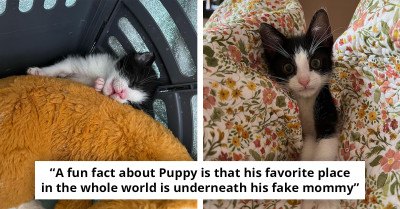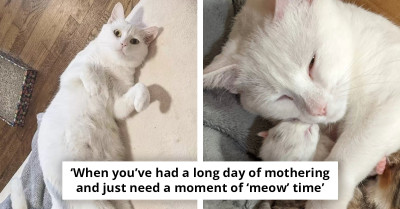
Wildlife Photographer Captures Amazing Images Of Churchill Polar Bears in Northern Canada
"These bears are on the edge of climate change. Telling their story is imperative to their survival."

Throughout his career, wildlife photographer George Turner has had some fantastic encounters, including documenting a sprinting lioness in Namibia and spending time with chimps in Tanzania. He recently journeyed to the furthest regions of northern Canada to photograph Churchill polar bears, which took him to a decidedly colder climate.
Turner spent time in the "polar bear capital of the world," photographing these magnificent animals in their natural habitat as part of a Churchill Wild adventure. Polar bears in northern Manitoba spend a considerable amount of the year on Hudson Bay, waiting for the ice to freeze over and the hunting season to begin.
Thousands flock to see these wonderful animals, which are experiencing huge challenges owing to climate change, as they are the world's most accessible polar bear population. Indeed, it is anticipated that the global polar bear population would drop by 30% by 2050, which is even more shocking when one realizes that just 22,000 to 31,000 polar bears exist in the wild.
"Walking with polar bears on foot has been my ultimate wildlife dream for years now. When Churchill Wild offered me the experience, I bit their hands off," Turner says. "Churchill Wild is the world's only operator who guides guests on foot with polar bears. "
"No tundra buggies, no snow machines, just your own two feet. This creates an incredible intimacy with Earth's largest land carnivore. "
"It's genuinely an experience like no other."
wildlife photographer George Turner went to northern Canada to photograph Churchill polar bears,
 George Turner
George TurnerWhat was Turner's average day like?
"After a night gazing at the Northern Lights, we'd head out to the shores of the Hudson Bay in search of the white giants. Once spotted, the guides—with 30 years of experience between them—create a game plan: how we'll approach, the best angles for photography, and so on.
On the approach, the group is in total silence, letting the bear know that we mean no harm. After everyone has their snaps, we leave the same way, quiet as we go."
And he got much more than he had hoped for
 George Turner
George TurnerHow was it different from his other experiences?
Other than being chillier, it was the intimacy that struck me. In such a silent world—snow snuffles out sound—the stillness creates a magical, ethereal feeling to the air.
Photographically, it's a dream. The crisp, cool air results in super sharp images, with the light interacting with every single snowflake.
He didn't just take photos of them
 George Turner
George TurnerWhat does he think about polar bears' temperament?
Contrary to popular belief, polar bears are incredibly calm, sociable animals. Never at any point did we feel threatened, only honored to share their home with them.
He got to know them
 George Turner
George Turner" It's genuinely an experience like no other," Turner says.
 George Turner
George Turner"In such a silent world—snow snuffles out sound—the stillness creates a magical, ethereal feeling to the air."
 George Turner
George TurnerWhat moment he won't forget?
The first encounter, without a doubt. With the magical Arctic, sunset came our first bear, a subadult male. Coming out of the willow bushes, he laid down on the frozen river, directly facing us.
My first 10 shots were blurry, as I was shaking with pure excitement. His stare was incredibly intense; he was looking at me.
Contrary to popular belief, polar bears are incredibly calm, sociable animals. Never at any point did we feel threatened, only honored to share their home with them."
 George Turner
George Turner"My first 10 shots were blurry, as I was shaking with pure excitement," the photographer says.
 George Turner
George Turner"As a photographer, it's my responsibility to relay and showcase these remote, wild places to people."
 George Turner
George Turner"It's my hope that anyone looking at my work, takes the time to really look at the images—to properly feel the moment as I felt it."
 George Turner
George Turner"As a photographer, it's my responsibility to relay and showcase these remote, wild places to people," Turner says.
"Moreover, these bears are on the edge of climate change. Telling their story is imperative to their survival.
Companies such as Churchill Wild are integral to that; they enable photographers, such as myself, to tell the stories," he concludes.
We couldn't agree more - these animals' stories must be told. They are not scary, they are not doing us any harm.
In fact, we are hurting them. And it's about time we stop
Damjan







